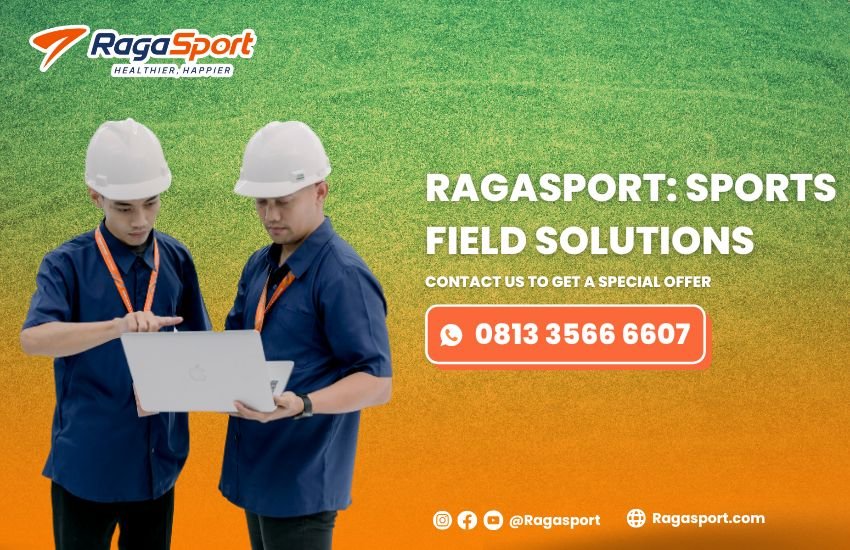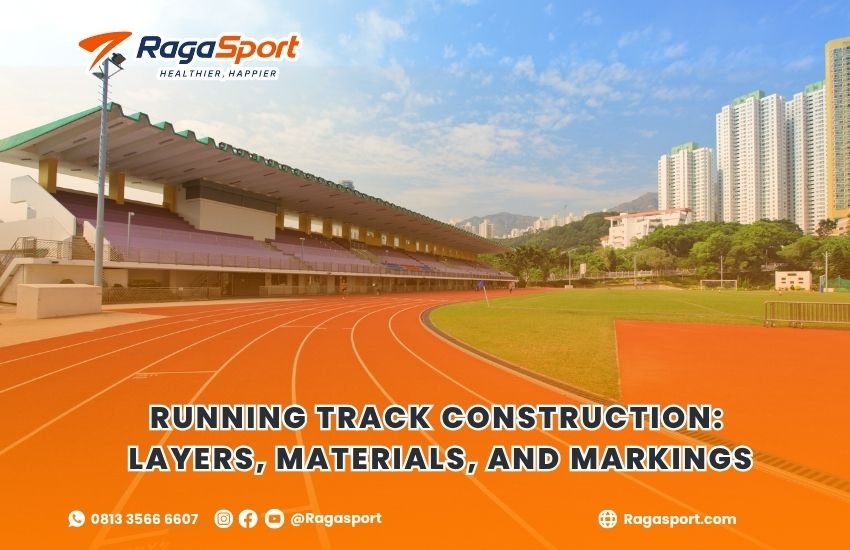A high-quality running track is essential for both athletic training and competition. Whether for schools, sports complexes, or public facilities, the construction of a running track requires precise engineering and knowledge of materials, surface layers, and marking regulations. This guide explores the critical aspects of running track construction, focusing on the structural layers, surface material options, and line markings required to meet national and international standards.
Table of Contents
1. Running Track Construction: Standard Dimensions and Layout
Before diving into layers and materials, it’s crucial to understand the layout of a standard running track.
- Track length: 400 meters (standard oval)
- Number of lanes: Usually 6 to 8
- Lane width: 1.22 meters per lane
- Inner radius: Approximately 36.5 meters
Tracks are built in an oval shape with two straights and two bends. The measurement of 400 meters is taken 30 cm from the inner edge of lane 1, as defined by World Athletics (formerly IAAF).
2. Construction Layers of a Running Track

Running tracks are built in multiple layers to ensure drainage, elasticity, and durability. Each layer serves a specific function.
2.1 Sub-Base Layer
This is the foundation of the track and is typically made of compacted crushed stone or gravel. It provides stability and facilitates drainage.
Purpose:
- Load-bearing
- Drainage support
- Freeze-thaw resistance
2.2 Base Layer
Placed above the sub-base, this asphalt or concrete layer forms a smooth, flat platform for surface installation.
Purpose:
- Structural support
- Flatness and evenness
- Adhesion base for top surfacing
2.3 Wearing Surface (Top Layer)
This is the final and visible layer of the track where athletes run. It is usually made from synthetic rubber compounds designed for shock absorption, grip, and weather resistance.
Common systems:
- Full PU system (poured polyurethane): Seamless, durable, used in top-level stadiums
- Sandwich system: Base mat + structural spray top layer
- Prefabricated rubber: Factory-made rolls installed on-site
3. Material Selection for Track Surfaces
Choosing the right material impacts the track’s longevity, safety, and performance. Most modern tracks use synthetic materials, though cinder and grass tracks still exist in some areas.
3.1 Polyurethane (PU)
Polyurethane-based surfaces are widely used due to their resilience and consistency.
Benefits:
- Long lifespan (up to 10–15 years)
- Excellent shock absorption
- UV and weather resistant
- Suitable for all levels of competition
3.2 EPDM Rubber Granules
Ethylene Propylene Diene Monomer (EPDM) is often mixed with PU to form the top layer. It is flexible, durable, and provides anti-slip properties.
3.3 Acrylic Resurfacing
For budget projects, acrylic coatings can be applied over asphalt bases. This system is less expensive but also less durable and typically used for training or recreational tracks.
4. Drainage and Water Management

A vital but often overlooked element is drainage. Proper slope and water management prevent pooling and extend the track’s life.
Best practices include:
- Sloping the base at 0.5–1%
- Installing French drains around the track perimeter
- Perforated pipes below the sub-base in heavy rainfall areas
Poor drainage can lead to cracks, bubbles, and surface degradation.
5. Markings and Line Painting
Accurate markings are essential for competition and training. These include lane lines, start and finish points, hurdles placements, and exchange zones for relays.
5.1 Marking Standards
All markings must follow World Athletics standards for competition legality. Precision in measurement and alignment is critical.
5.2 Common Markings:
- Lane lines (white, 5 cm width)
- 100m and 200m sprint start lines
- Staggered start lines for lanes 2–8
- Relay zones marked in contrasting colors
- Hurdle marks in specific lane positions
5.3 Materials Used for Markings
Track markings are typically painted using durable polyurethane or epoxy-based paints that resist weather and wear.
6. Maintenance and Resurfacing
Even high-quality tracks require regular maintenance to preserve safety and performance.
6.1 Regular Maintenance Tasks
- Sweeping and cleaning debris
- Checking for surface wear or loose granules
- Repainting faded lane markings
- Inspecting drainage and base integrity
6.2 Resurfacing Cycle
Depending on usage and material, resurfacing may be required every 7–10 years. Resurfacing involves reapplying the top layer and repainting lines.
7. Budget Considerations

The cost of building a standard 400-meter synthetic track can vary widely depending on materials, features, and location.
Estimated construction costs:
- Basic synthetic track (6-lane): $250,000–$450,000
- 8-lane competition track: $500,000–$900,000
- Additional features (lighting, fencing, spectator stands): Extra cost
Cost variables include:
- Type of surfacing system
- Number of lanes
- Sub-base conditions
- Accessibility and local regulations
8. Customization Options
In addition to standard features, many facilities add customized elements for versatility and branding:
- Custom color surfacing (red, blue, green, etc.)
- Logos or school emblems embedded in the track
- Combined fields for football or rugby infield use
- Covered walkways or shaded stands
These additions enhance user experience and can also attract sponsorships or events.
9. Compliance and Certification
For competitive use, running tracks must comply with World Athletics regulations. Certification ensures:
- Accurate measurements
- Approved surfacing material
- Proper markings and drainage systems
Hiring a certified construction contractor experienced in athletic facility construction helps meet compliance with minimal issues.
Ready to Build the Perfect Running Track?

Let Raga Sport turn your vision into reality with expert construction, top-quality materials, and a track that meets every standard.
👉 Explore our projects at ragasport.com
📲 Chat with our team now via WhatsApp: wa.me/6281335666607

